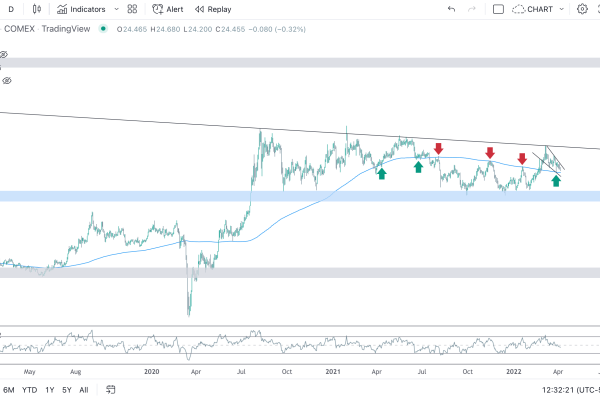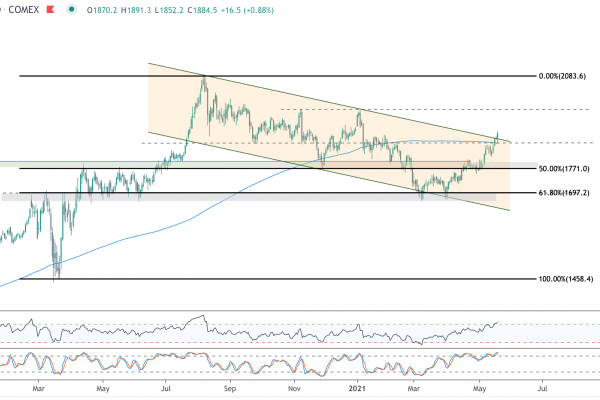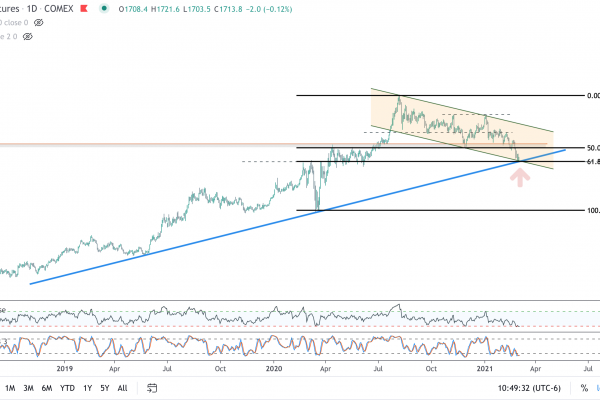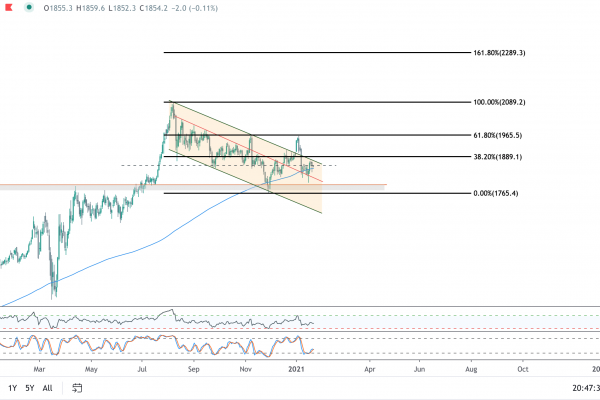Written by Border Gold May 22, 2018
The gold market continues to see some selling pressure, and is now trading around a five month low. Recent dollar strength has likely been a primary driver of gold weakness, while higher stocks and robust appetite for risk are also likely playing a big role as well.
This week, investors will monitor ongoing trade negotiations with China, as well as some key pieces of economic data. Wednesday’s release of the latest Fed meeting minutes may be the most heavily scrutinized data point of the week. It has been looking more and more like the central bank will need to hike rates four times this year rather than the previously anticipated three. The minutes could act as confirmation that the Fed plans a more aggressive stance towards monetary policy, and could potentially be market-moving.
A more aggressive Fed could keep the recent dollar rise going, although just how much the currency has left in the tank is unclear. The dollar has been climbing along with numerous commodities, and at some point, the negative correlation between the dollar and commodities will likely take hold again. Given increasing deficits, lower tax revenues and other issues, the dollar could very well stall out and reverse course.
Rising treasury yields and crude oil prices will also remain an area of investor focus. The yield on the benchmark ten year note is holding steady above the 3% level, trading at 3.07% on Monday. The notion of higher yields has given some stock investors reason for pause in recent months, but apparently yields have not yet risen high enough to put a significant dent in stocks or risk appetite.
The idea of the ten year hitting a 4% yield this year has been gaining some traction, and at that level may prove to be a much more significant hurdle for higher stocks.
Oil has been steady and maintaining trade over the $70 level. Higher oil prices could be considered bullish for gold, as rising prices are considered inflationary. The notion of $100 per barrel oil seems to be picking up steam, and if oil continues its recent ascent it is likely to keep a solid floor under gold and other commodity prices.
It was reported that U.S. Secretary of State Mike Pompeo recently suggested that the U.S. could impose the “strongest sanctions in history” against Iran if the country does not make significant changes to its foreign and domestic policies. The U.S. recently pulled out of the 2015 Iran nuclear deal, and is taking a more hardline approach to the nation. Sanctions could have a significant impact on the oil market, and may also keep upward price pressures going.
Although the gold market has been under pressure in recent weeks, the fundamentals still appear to look strong. Increasing inflation, the geopolitical landscape and increasing odds of the next recession may all serve to keep prices from falling much further.
Outside of any major geopolitical events, the gold market will likely start to see a more significant and sustainable rally once the bull market in stocks has run its course. With asset reallocating already underway, this could be coming sooner rather than later.






